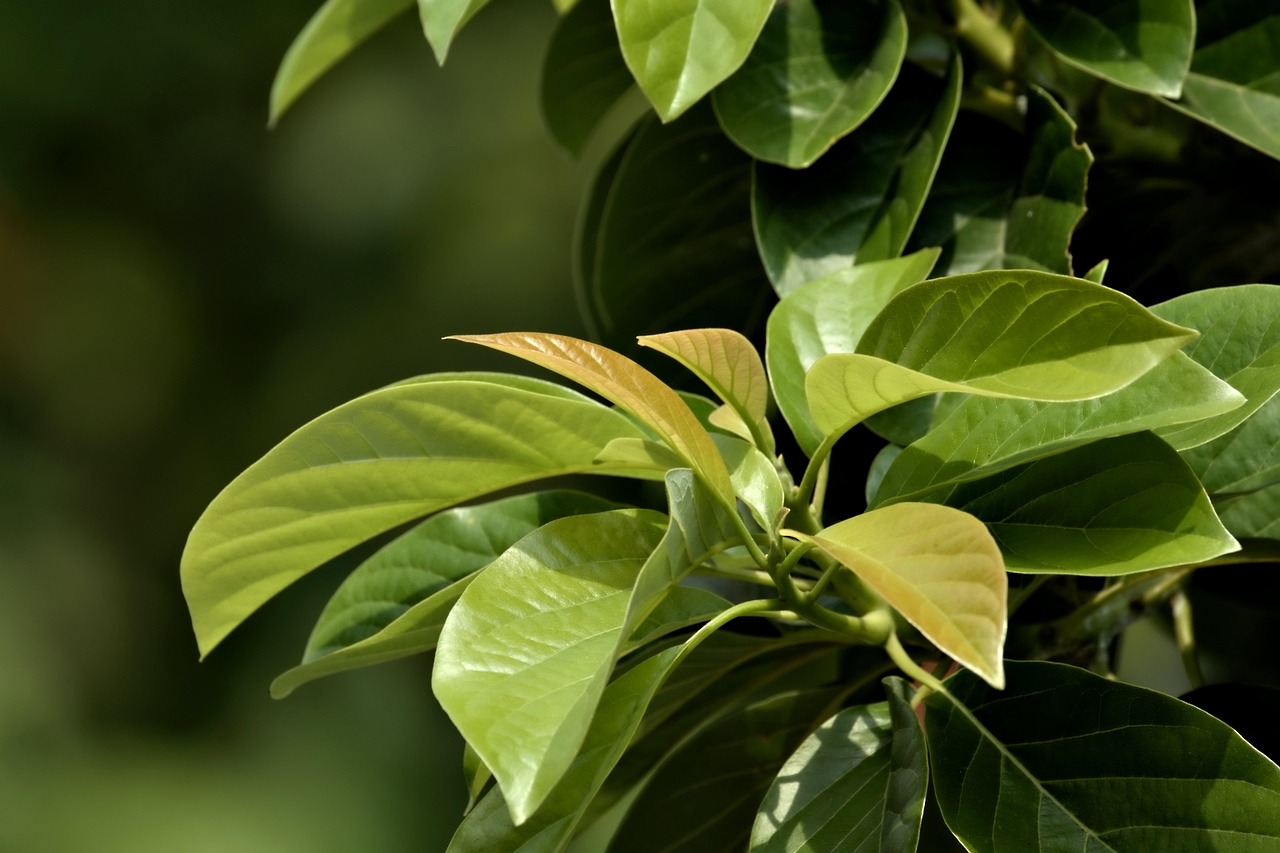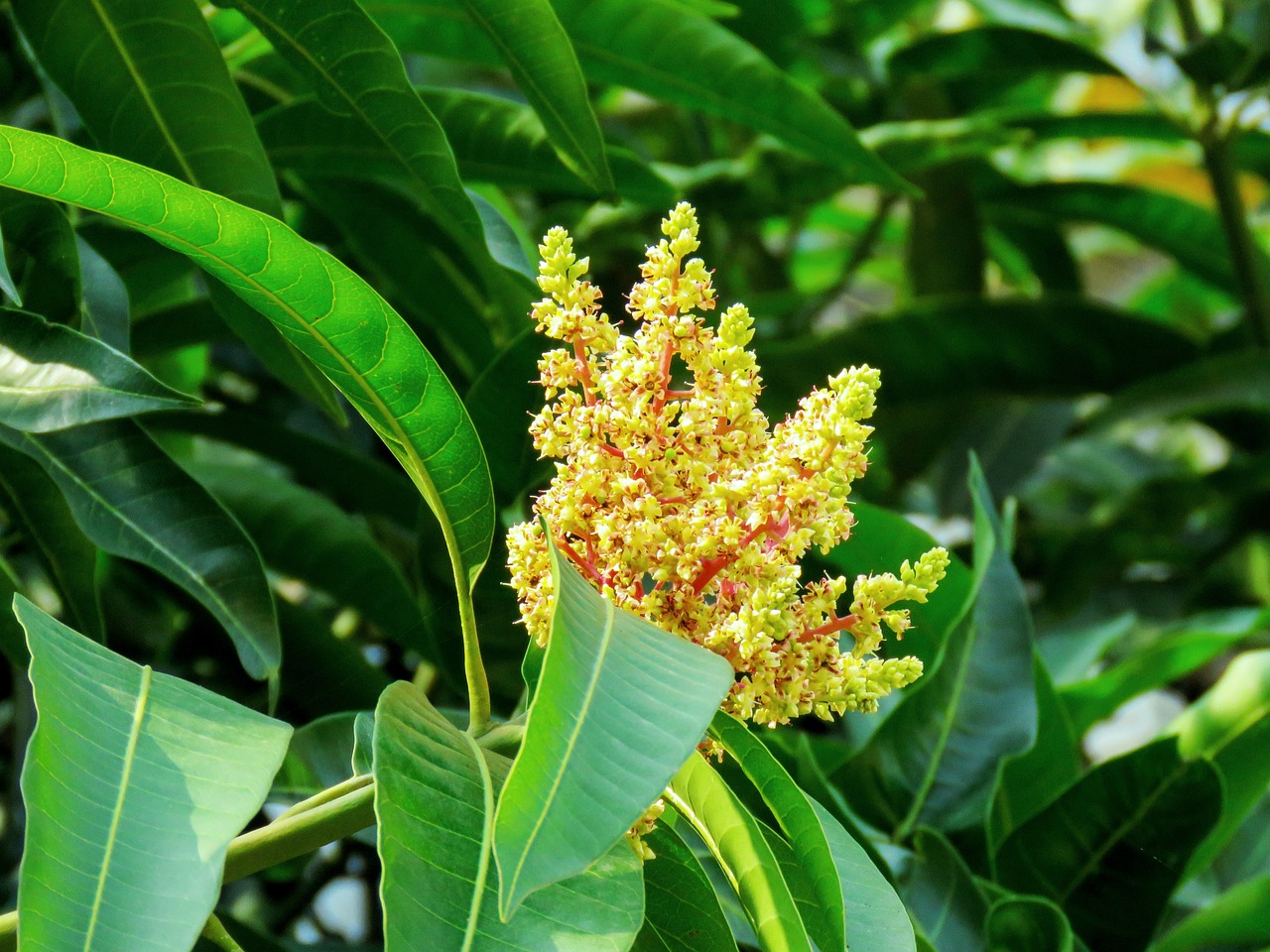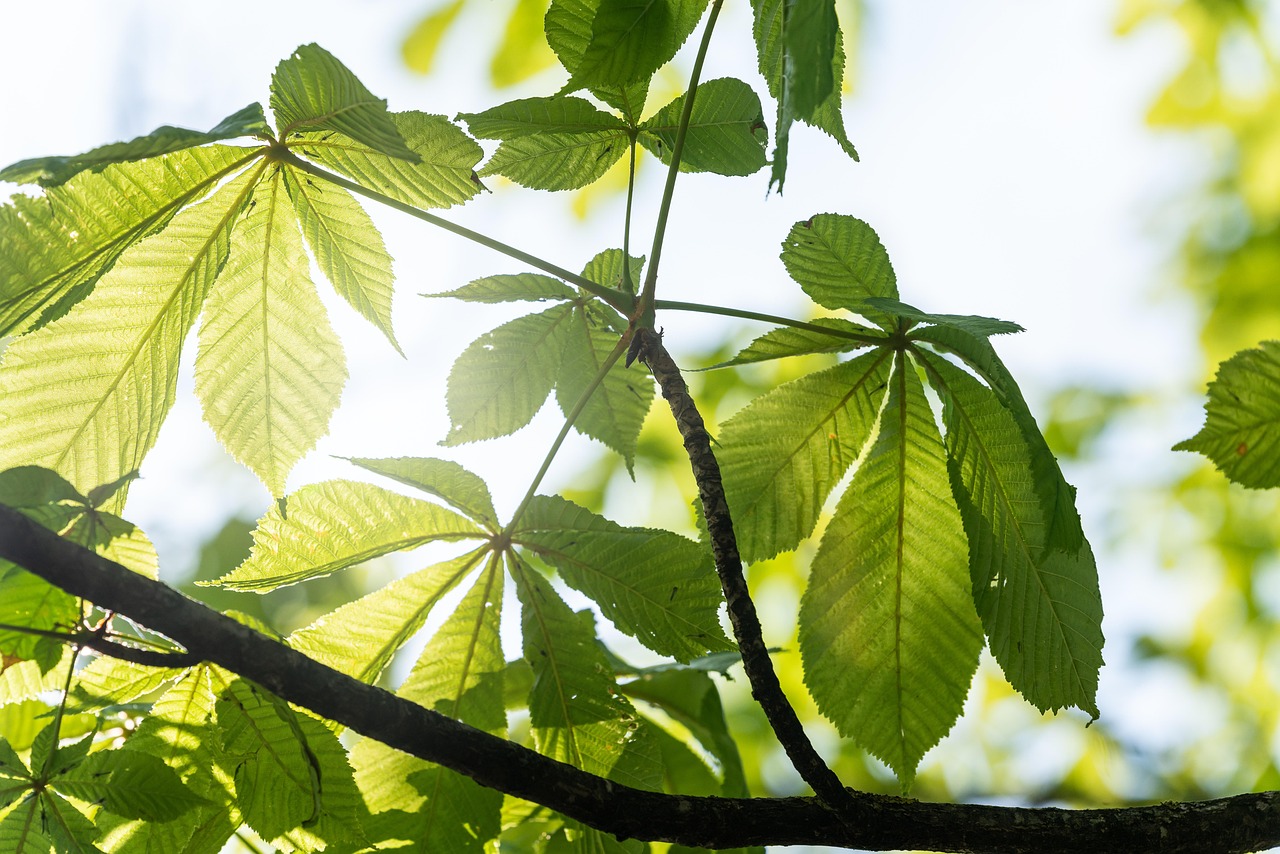The growth rate of trees in India varies significantly based on regional climates, ranging from rapid growth in tropical areas to slower growth in arid and temperate zones. Factors such as temperature, rainfall, soil type, and altitude greatly influence these rates.
India is a country of immense biodiversity, characterized by various climates that affect the growth rates of its trees. From the lush tropical forests in the southwest to the arid deserts in the northwest, each region offers unique conditions. Understanding these variations is crucial for effective forestry management, conservation efforts, and agricultural practices.

Tree growth can be influenced by several environmental factors including:
- Temperature
- Rainfall
- Soil quality
- Altitude
- Sunlight exposure
In India, the climate can be broadly categorized into five zones: tropical, subtropical, temperate, cold desert, and alpine. Each of these zones presents different conditions that dictate how quickly trees can grow.
Growth Rates by Climate Zone
To better understand the growth rates of trees across India’s diverse climates, it is essential to examine each climate zone individually. Below is a summary of the average growth rates for various tree species in different regions:

| Climate Zone | Common Tree Species | Average Growth Rate (cm/year) |
|---|---|---|
| Tropical | Teak, Mahogany, Bamboo | 50-120 |
| Subtropical | Eucalyptus, Acacia | 30-90 |
| Temperate | Oak, Pine, Maple | 20-60 |
| Cold Desert | Juniper, Cedar | 5-15 |
| Alpine | Spruce, Fir | 10-30 |
The tropical zone, which includes regions like Kerala and parts of Karnataka, experiences high rainfall and warm temperatures throughout the year. This environment fosters rapid tree growth. For instance, teak can grow up to 120 cm per year under ideal conditions.
The subtropical regions, such as Punjab and Haryana, have distinct seasons with hot summers and cold winters. Here, tree species like eucalyptus thrive, with average growth rates ranging from 30 to 90 cm per year. The availability of irrigation further enhances tree growth in these areas.
In temperate zones, such as parts of Uttarakhand and Himachal Pradesh, the growth rate slows down due to colder temperatures. Species like oak and pine generally experience average growth rates of 20 to 60 cm annually. These trees often enter a dormant phase during the winter months.

The cold desert regions of Ladakh and parts of Rajasthan present harsh conditions with limited water availability. Trees such as juniper and cedar have adapted to these environments but grow very slowly. Their annual growth rate can be as low as 5 to 15 cm.
Lastly, the alpine zone located in the higher altitudes of the Himalayas features a short growing season and harsh climatic conditions. Trees like spruce and fir can achieve growth rates of 10 to 30 cm per year. These trees are resilient but require specific conditions to flourish.
The diversity in tree growth rates across India highlights the importance of understanding local climate conditions for effective forestry management. This knowledge aids in selecting appropriate species for reforestation projects and sustainable land-use planning.

Factors Influencing Tree Growth Rates
Understanding the various factors that influence tree growth rates is essential for conservation and forestry practices. The growth of trees in India is affected by a combination of environmental, biological, and anthropogenic factors. This section will explore these influences in more detail.
Environmental Factors
Several environmental conditions significantly impact how trees grow in different regions of India:
- Climate: Temperature and rainfall are the two most critical climate factors affecting tree growth. For instance, tropical regions offer higher temperatures and greater rainfall, which promote faster growth.
- Soil Quality: The type of soil, its nutrient content, and drainage capacity directly influence tree health and growth rates. Deep, loamy soils are generally more favorable for tree growth than sandy or clayey soils.
- Altitude: As altitude increases, the temperature decreases, which can slow down growth. Higher altitudes also face shorter growing seasons.
- Sunlight: Adequate sunlight is crucial for photosynthesis. Areas with dense canopy cover may limit light availability for understorey trees, inhibiting their growth.
Biological Factors
In addition to environmental factors, biological aspects also play a crucial role in determining tree growth rates:
- Tree Species: Different species have distinct growth patterns. Fast-growing species like eucalyptus can reach maturity quickly, while others, such as oaks, may take decades to grow significantly.
- Age: Young trees typically grow faster than older trees. Growth rates tend to taper off as trees age due to resource allocation towards reproduction and maintenance.
- Pest and Disease Pressure: Infestations or diseases can hinder growth by damaging foliage or roots. Healthy trees can grow more efficiently compared to those affected by pests.
Human Impact on Tree Growth
Human activities can significantly affect tree growth rates in various ways:
- Deforestation: Cutting down forests for agriculture or urban development reduces tree population and disrupts local ecosystems, resulting in slower regrowth rates.
- Afforestation and Reforestation: Planting trees in deforested areas or enhancing existing forests can help improve growth rates, especially when appropriate species are chosen.
- Agricultural Practices: Agricultural land management techniques, such as crop rotation and cover cropping, can enhance soil health and indirectly benefit nearby tree growth.
The Role of Tree Growth in Ecosystem Services
Trees provide numerous ecosystem services that are vital for sustaining life on Earth. Understanding tree growth rates and their implications can help in conserving these invaluable resources. Some key services provided by trees include:
- Carbon Sequestration: Trees absorb carbon dioxide from the atmosphere, helping mitigate climate change by storing carbon in their biomass.
- Biodiversity Support: Forests serve as habitats for countless species of flora and fauna. Healthy tree growth contributes to maintaining biodiversity.
- Soil Conservation: Tree roots bind the soil together, preventing erosion and maintaining soil health. This is particularly important in regions prone to landslides or flooding.
- Water Cycle Regulation: Trees play a crucial role in regulating the water cycle by absorbing rainfall and releasing water vapor through transpiration.
The Importance of Sustainable Forestry Practices
Sustainable forestry practices are essential for maintaining healthy tree growth rates while ensuring that the ecosystem services provided by forests are preserved. Some sustainable practices include:
- Selective Logging: Harvesting specific trees rather than clear-cutting entire areas helps maintain forest structure and supports regeneration.
- Community Involvement: Engaging local communities in forestry management ensures that their knowledge and needs are considered, leading to better conservation outcomes.
- Monitoring and Research: Continuous research on tree growth rates and forest health is vital for adapting management practices to changing environmental conditions.
The intricate relationship between tree growth rates and regional climates emphasizes the need for informed management strategies. By understanding these dynamics, stakeholders can make better decisions that benefit both forests and the communities that depend on them.
Regional Case Studies of Tree Growth
To better understand tree growth rates across India’s diverse climates, it is beneficial to examine specific regional case studies. Each region presents unique characteristics that influence the growth of local tree species. This section will delve into notable examples from various parts of India.
Tropical Rainforests of Western Ghats
The Western Ghats, a UNESCO World Heritage site, is known for its rich biodiversity and endemic species. The tropical rainforest climate provides ideal conditions for rapid tree growth. The average rainfall in this region is over 3000 mm annually, with temperatures ranging from 20°C to 35°C.
Common species in this region include:
- Teak (Tectona grandis): Known for its durable wood, teak can grow up to 120 cm per year.
- Mahogany (Swietenia macrophylla): This valuable hardwood can achieve growth rates of 60-90 cm per year.
- Bamboo: Various species of bamboo thrive here, with some capable of growing up to 91 cm in a single day under optimal conditions.
Subtropical Forests of Punjab and Haryana
The subtropical regions of Punjab and Haryana experience hot summers and cold winters. The average rainfall ranges from 500 mm to 800 mm, making irrigation essential in many areas. Important tree species include:
- Eucalyptus (Eucalyptus globulus): This fast-growing species can reach heights of over 30 meters with growth rates of 30-90 cm per year.
- Acacia (Acacia nilotica): Known for its ability to thrive in poor soils, it can grow around 20-50 cm annually.
The subtropical conditions favor the planting of commercial timber species, which are often cultivated for their quick growth and economic value.
Temperate Forests of Himachal Pradesh
The temperate forests of Himachal Pradesh are characterized by cold winters and moderate rainfall. The average annual precipitation ranges from 800 mm to 1500 mm, with temperatures varying significantly between seasons. Key species include:
- Oak (Quercus spp.): Oaks are slow-growing trees, typically achieving growth rates of 20-40 cm per year.
- Pine (Pinus roxburghii): Known for its resilience, this tree can grow at a rate of about 30-60 cm annually.
The growth rates in these forests are impacted by the shorter growing seasons and the presence of snow during winter months.
Cold Desert Regions of Ladakh
Ladakh, located in the northernmost part of India, features cold desert conditions with extremely low precipitation levels (less than 200 mm annually) and harsh temperatures. In these challenging conditions, tree growth is minimal:
- Juniper (Juniperus spp.): This hardy species grows at a rate of 5-15 cm per year and can live for several hundred years.
- Cedar (Cedrus deodara): A culturally significant species, cedars grow slowly at about 10-20 cm annually.
The adaptation strategies of these trees involve thick bark and deep root systems to withstand extreme weather conditions.
Impact of Climate Change on Tree Growth Rates
Climate change poses significant challenges to tree growth rates across India. Rising temperatures, changing precipitation patterns, and increased frequency of extreme weather events can alter the growth dynamics of various tree species.
Temperature Increases
Higher temperatures can accelerate growth rates for some species but may also stress others. For example:
- Fast-growing species may thrive initially but could face drought stress in prolonged heatwaves.
- Slower-growing species may not adapt quickly enough to changing conditions, leading to decreased growth rates.
Changes in Precipitation Patterns
Variability in rainfall can have both positive and negative effects:
- Increased rainfall may enhance growth in already moist regions but can lead to flooding and soil erosion.
- Drought conditions can severely limit growth rates, particularly in arid and semi-arid regions.
Forest Management Adaptations
To combat the effects of climate change, adaptive forest management practices are critical. These may include:
- Diverse Planting Strategies: Introducing a mix of tree species that can withstand various climate scenarios.
- Soil Conservation Techniques: Implementing methods to protect soil health and moisture retention.
- Monitoring Ecosystem Health: Regular assessments to track changes in tree growth and health over time.
The response of tree species to climate change will shape the future landscape of India’s forests. Understanding these dynamics is essential for sustainable forestry practices that will adapt to ongoing environmental shifts.
Future Directions for Research and Conservation
The complexities of tree growth rates in India’s diverse climates necessitate ongoing research and adaptive management strategies. As climate change continues to impact environmental conditions, it is essential to focus on scientific studies that can inform conservation efforts and forestry practices. Key areas for future research include:
- Genetic Studies: Investigating the genetic diversity of tree species can help identify traits that enhance resilience to climate change, pests, and diseases.
- Long-term Growth Monitoring: Establishing long-term growth monitoring programs will provide critical data on how trees respond to varying climatic factors over time.
- Restoration Ecology: Research into effective restoration techniques for degraded forests can help improve reforestation efforts and enhance biodiversity.
- Community-based Forestry Research: Engaging local communities in research efforts can lead to better understanding and implementation of sustainable practices, ensuring that traditional knowledge is integrated into modern forestry management.
In addition to these areas of focus, collaboration between government agencies, non-governmental organizations (NGOs), and academic institutions will be crucial. Such partnerships can facilitate resource sharing, capacity building, and the development of comprehensive strategies that address both local and global challenges in forestry management.
Final Thoughts
Understanding the growth rates of trees across India’s diverse regional climates is vital for developing effective conservation strategies and sustainable forestry practices. The variations in growth rates highlight the adaptability of different tree species to their respective environments. However, these growth dynamics are under threat from climate change, deforestation, and unsustainable land-use practices.
To ensure the health of India’s forests and their associated ecosystems, a multi-faceted approach is essential. This includes:
- Implementing Sustainable Practices: Adoption of sustainable forestry practices will help mitigate negative impacts on tree growth and forest health.
- Enhancing Community Engagement: Involving local communities in conservation efforts can lead to more effective management strategies tailored to specific regional needs.
- Promoting Awareness: Educating the public about the importance of forests and tree growth rates can foster a culture of conservation.
The future of tree growth in India depends on our ability to adapt to changing climatic conditions while preserving the rich biodiversity that exists within its forests. By prioritizing research, community involvement, and sustainable practices, stakeholders can work towards a resilient future for India’s forests. This will not only benefit the environment but also support the livelihoods of millions who depend on these vital ecosystems.
The road ahead is challenging but full of opportunities for innovation and collaboration. Together, we can contribute to the sustainability of India’s forests, ensuring they thrive for generations to come.
